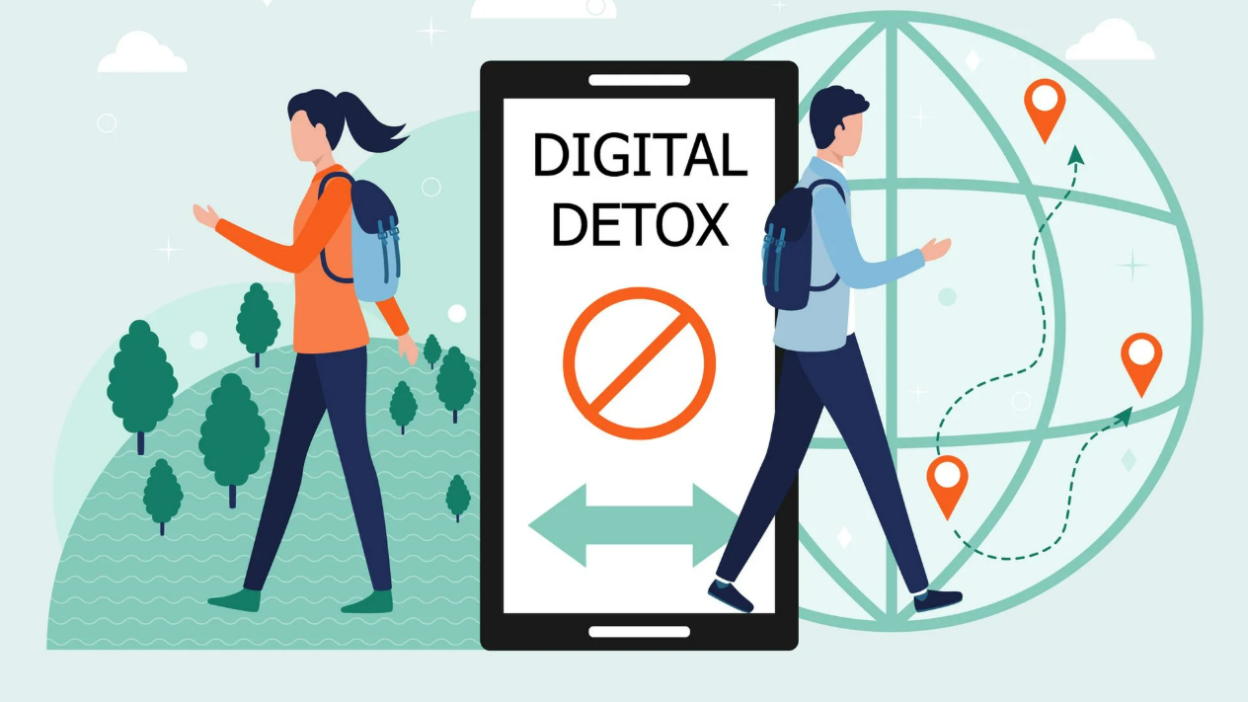We live in the most connected era in human history. Our smartphones link us to billions worldwide in milliseconds. Social media platforms catalog our daily moments. Video calls bridge continental divides. Yet alongside this unprecedented connectivity, many experience profound disconnection. Despite thousands of digital “friends,” loneliness rates have reached epidemic proportions.
This paradox forms the foundation of a growing movement: digital detox communities. These intentional groups recognize that constant connectivity often undermines genuine connection. They create spaces—both temporary and ongoing—where technology use is deliberately limited to foster deeper human relationships.
The appeal of these communities isn’t about rejecting technology entirely. Rather, they promote intentional use—creating boundaries that allow technology to serve human connection rather than replace it. As screens increasingly mediate our interactions, these communities offer a counterbalance, reminding us what unfiltered human presence feels like.
The Spectrum of Digital Detox Communities
Digital detox communities take diverse forms, each offering different approaches to technology limitation. Understanding this spectrum helps community builders identify models that might serve their specific audiences.
Temporary retreat communities gather participants for defined periods—ranging from hours to weeks—in settings where digital devices are either prohibited or severely restricted. From weekend nature retreats to week-long silent meditation programs, these experiences provide immersive breaks from digital stimulation. The temporary nature makes them accessible entry points for those curious about digital minimalism without requiring permanent lifestyle changes.
Ongoing intentional communities establish continuous spaces where technology use follows agreed-upon limitations. Coliving arrangements might designate device-free common areas or implement daily “offline hours.” Regular meetup groups might enforce phone stacking during gatherings or create tech-free social events. These communities integrate digital moderation into everyday life rather than treating it as a special occasion.
Hybrid models combine elements of both approaches. Monthly digital sabbath groups might gather regularly for tech-free time while maintaining online connections between meetings. Family-focused communities might implement tech-free dinner policies at home while organizing occasional unplugged weekend activities with other families.
According to research from the Center for Humane Technology, these structured approaches to technology limitation often prove more sustainable than individual willpower alone. The social commitment and shared values provide accountability that helps participants maintain boundaries they might struggle to enforce independently.
Core Benefits of Tech-Limited Community Building
The intentional limitation of technology within communities creates distinct advantages for connection quality. Without the constant possibility of digital distraction, conversations naturally deepen. Research consistently demonstrates that even the mere presence of smartphones—even when not actively used—reduces conversational depth and empathetic connection. By removing these devices, detox communities create conditions where participants become fully present with one another.
Attention recalibration represents another significant benefit. Constant digital stimulation trains our brains to expect immediate gratification and rapid context switching. Tech-limited settings allow participants to gradually recalibrate, rediscovering the pleasures of sustained attention on single activities or conversations. Many report experiencing initial discomfort followed by profound relief as their attention spans recover.
At BuildBonding, we’ve observed that intentional tech limitations particularly benefit relationship formation. When new connections form without digital mediation, they often develop different qualities—less performance-oriented, more comfortable with silence, and more attuned to subtle non-verbal cues that screens typically obscure.
Physical wellness improvements frequently emerge in these communities as well. Reduced screen time naturally leads to more movement, better sleep quality (particularly when evening device use is limited), and decreased eye strain. These physical benefits create virtuous cycles that enhance mental clarity and emotional availability for genuine connection.
Designing Effective Digital Detox Communities
Creating successful tech-limited communities requires thoughtful design rather than simply banning devices. Effective approaches consider both practical implementation and psychological factors that influence participant experience.
Clear purpose articulation helps members understand why technology limitations exist. Rather than framing rules as restrictions, successful communities emphasize the positive experiences these boundaries enable. When participants understand that device limitations serve connection rather than impose arbitrary constraints, buy-in increases significantly.
Graduated introduction often works better than abrupt restrictions. Communities might begin with shorter tech-free periods or partial limitations before progressing to more comprehensive approaches. This gradual process helps participants manage the anxiety that many experience when first separating from devices.
Physical environment design significantly impacts success. Creating compelling offline alternatives to digital entertainment—from well-stocked bookshelves to comfortable conversation nooks to engaging games and activities—helps members rediscover non-digital pleasures. The most successful communities invest as much thought in their physical spaces as online communities invest in their digital interfaces.
Clear boundary communication prevents misunderstandings that can undermine community cohesion. Whether through written agreements, visual reminders, or orientation processes, effective communities ensure all participants understand when and where technology use is appropriate. Many communities designate specific “tech zones” where device use remains acceptable, creating balanced approaches rather than absolute prohibitions.
Navigating Common Challenges
Digital detox communities inevitably face obstacles that require thoughtful navigation. Addressing these challenges proactively improves sustainability and member satisfaction.
Withdrawal symptoms genuinely affect many participants, particularly during initial detox periods. Physical sensations like phantom vibrations, anxiety about “missing out,” and difficulty focusing are common transitional experiences. Effective communities normalize these responses while providing support strategies—like buddy systems, mindfulness practices, or graduated reintroduction—that help members work through uncomfortable adjustment periods.
Practical coordination needs can create legitimate tensions with technology limitations. How do members coordinate logistics without messaging apps? How do they share photos of community experiences? How do they maintain connections between in-person gatherings? Successful communities develop clear protocols for essential communication while maintaining core limitations, often designating specific times for practical digital use.
External relationship management presents another common challenge. Participants may face pressure from work, family, or friends who expect immediate digital availability. Communities can help members navigate these expectations by providing communication templates, establishing emergency contact protocols, and creating culture that validates healthy boundary-setting with outside connections.
Varied dependency levels among participants require balanced approaches. While some members might comfortably embrace comprehensive tech limitations, others may struggle with severe FOMO or work requirements that necessitate some connectivity. According to Digital Wellness Institute research, communities that offer tiered participation options—allowing members to select appropriate limitation levels—often achieve greater overall engagement than those with one-size-fits-all approaches.
Measuring Impact and Success
Like any community initiative, digital detox programs benefit from thoughtful measurement approaches. Rather than focusing solely on technology metrics (hours offline, etc.), successful communities track markers of connection quality and participant wellbeing.
Relationship formation rates reveal whether tech limitations actually foster new connections. How many meaningful relationships form during detox periods? Do these relationships sustain beyond initial formation? Do they demonstrate qualities different from digitally-mediated connections?
Qualitative experience assessment provides critical insights that quantitative measures might miss. Regular reflection circles, member interviews, or journal exercises help communities understand how participants experience tech limitations emotionally and socially. These qualitative approaches often reveal unexpected benefits and challenges that inform community evolution.
Attention quality indicators help measure cognitive impacts. Can participants engage in increasingly complex or lengthy conversations? Do they report improved ability to focus on single tasks? Have their reading habits shifted toward longer-form content? These attention markers often correlate strongly with connection quality.
Wellbeing improvements represent critical success metrics. Do members report better sleep quality? Has their anxiety decreased? Do they describe greater life satisfaction? While not exclusively attributable to tech limitations, these wellbeing indicators help communities understand their broader impact on members’ lives.
Balancing Digital Detox With Digital Engagement
Despite their focus on limitation, most successful digital detox communities recognize that technology itself isn’t inherently problematic—rather, it’s certain usage patterns that undermine connection. This nuanced understanding helps communities develop balanced approaches that limit harmful digital habits while leveraging beneficial technologies.
Intentional reintegration guidance helps members maintain healthy boundaries when returning to regular technology use. Rather than treating detox experiences as temporary escapes, effective communities help participants identify which digital limitations they might maintain in everyday life and which technologies actually enhance their most important relationships.
Many communities incorporate digital education alongside limitation practices. By helping members understand attention economics, persuasive design tactics, and the neuroscience of digital habit formation, they empower more conscious technology choices beyond formal detox periods.
Community documentation often benefits from selective technology use. Photo sharing systems, community archives, or scheduling tools can support community functioning without undermining core connection goals. The key lies in ensuring that technology serves community purposes rather than dictating community behavior.
Building Sustainable Digital Balance
The most successful digital detox communities ultimately help members develop ongoing relationships with technology that support rather than undermine human connection. Rather than treating digital limitation as a temporary cleanse, they foster lasting mindfulness about how, when, and why we engage with our devices.
This sustainability often emerges through regular practice rather than permanent restriction. Weekly device-free gatherings, monthly digital sabbaths, or quarterly extended detox retreats create rhythms that help participants maintain awareness even during connected periods. These recurring patterns help normalize regular breaks from technology as part of healthy modern life.
Evolving community norms allow adaptation to changing technologies and member needs. Effective communities regularly revisit their limitations, discussing which boundaries remain helpful and which might need adjustment. This ongoing conversation prevents rigid adherence to outdated rules while maintaining core values around presence and connection.
Conclusion
In an era of unprecedented digital immersion, intentional tech-limited communities offer vital counterbalance. By creating spaces where human connection happens directly rather than through screens, these communities help members rediscover the irreplaceable value of unmediated presence.
The most successful digital detox communities don’t simply reject technology—they help members develop more intentional relationships with digital tools. They recognize that meaningful connection in the modern world requires thoughtful navigation of both online and offline spaces rather than wholesale rejection of either realm.
As digital environments increasingly dominate our social landscape, spaces that prioritize direct human connection become not merely pleasant alternatives but essential requirements for psychological wellbeing and social cohesion. Digital detox communities remind us that while technology offers remarkable connection possibilities, the depth of human relationship still emerges most powerfully when we set aside our screens and engage directly with those around us.
By creating intentional boundaries around technology use, these communities don’t just limit digital distraction—they create space for the focused attention, vulnerability, and presence that meaningful human bonds require. In doing so, they offer a model not of rejection but of balance—showing how we might incorporate remarkable digital tools without sacrificing the irreplaceable value of being fully present with one another.





